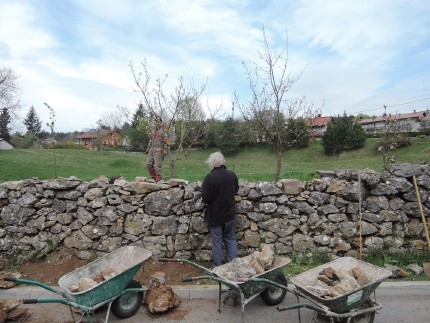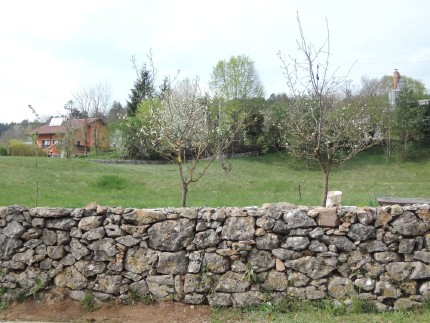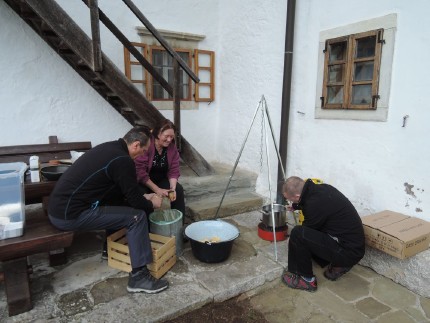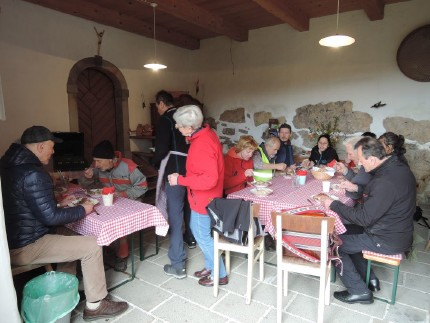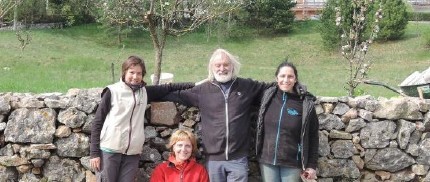Drystone Walls of Pivka
Important building blocks of our cultural landscape and indicators of preserved cultural heritage
Drystone construction is the art of masonry without the use of a binding agent. Stones, located in the immediate vicinity, are used for construction. As stones differ from location to location and in their shape, the walls are also different.
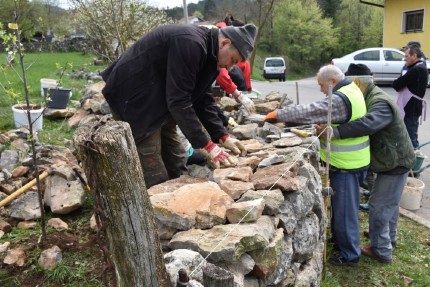
Drystone walls were created when our ancestors cleaned the soil in order to try to acquire a new working area, separating it from the grassland where livestock had been herding.
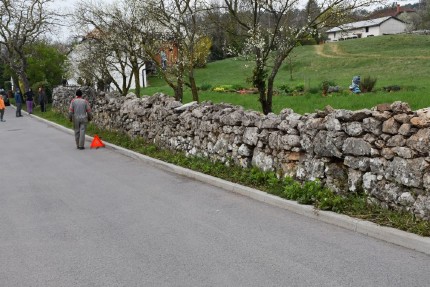
Drystone walls were also used as protection against fire and the bora wind. The walls in this function were named security walls or bulwarks. Thus, in the newspaper, Slovenec: a political paper for the Slovene nation (October 7, 1910, year 38, number 228), we can read the following: Security walls (bulwarks) and d i t c h e s. As a shield against grazing livestock and fire, a drystone wall, 248 metres long and 1 metre high, was constructed in Košana and Neverke, in the municipality of Košana. And in the municipality of Palčje, the same wall, 394 metres long, was constructed.
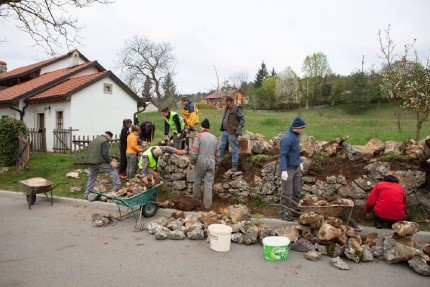
Drystone walls represent an important element in our cultural landscape, and contribute to an increase in biodiversity, as unlike concrete walls, dry and airy spaces between the stones provide an important habitat for many animal and plant species.
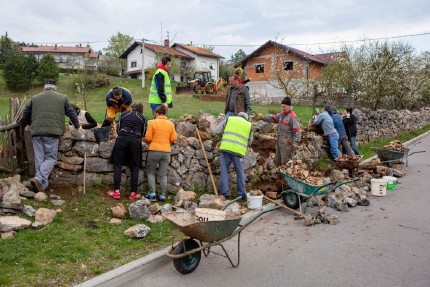
Unfortunately, with the abandonment of traditional agriculture, their use has been lost, and the techniques and skills of masonry with it. In order to prevent the loss of this skill, their maintenance, renovation, and construction are essential, because this knowledge is passed down from generation to generation. The art of drystone construction was also included in the UNESCO's Representative List of Intangible Cultural Heritage of Humanity. But the entry in the list itself does not mean that the skill will be preserved. How much good we will get from the entry depends mainly on ourselves - the owners of drystone constructions, local administrations, and other related institutions.
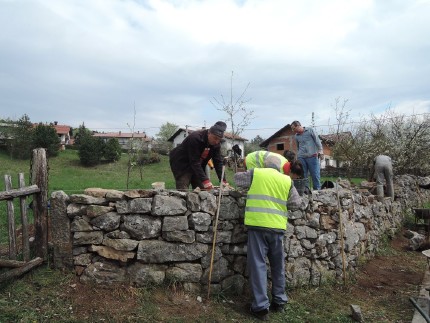
Since we want to contribute to the preservation of drystone walls in the municipality of Pivka, we have carried out a workshop in cooperation with the ecomuseums, for the transfer of knowledge of drystone construction skills within the framework of the Culturecovery project, aimed at the protection of the intangible cultural heritage. The workshop, which took place on Saturday 13 April, in the Šobčeva domačija on Kal, was organised by the Ecomuseum of the Seasonal Lakes of Pivka. Participants at the workshop were very diverse, since they came from different age groups and different backgrounds. Boris Čok, expert on Karst drystone construction, was of great help in the organisation of the workshop. We were also happy to see the participants from the Škocjan Caves Park, experts from the Institute for the Protection of Cultural Heritage of Slovenia from the regional unit Nova Gorica, and members of the Karst Drystone Construction Partnership. The event also brought together different groups of people. With music, good food, and the exchange of experiences, in diverse company, we reconstructed the greater part of the wall. The time went by very fast, and the participants agreed that construction is also a kind of meditation, which is especially welcome in this fast-moving world.
